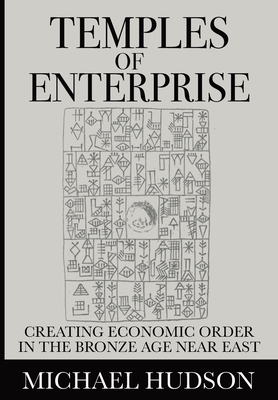Temples of Enterprise: Creating Economic Order in the Bronze Age Near East

Temples of Enterprise: Creating Economic Order in the Bronze Age Near East
The twelve articles collected in this volume describe how the most basic features of Western economic organization - money, markets, land tenure and enterprise - were created in the temples and palaces of the ancient Near East. The perspective on these topics originated in the five international colloquia organized by the Institute for the Study of Long-term Economic Trends (ISLET) with Harvard University's Peabody Museum from 1994 to 2015. When these meetings began, most Assyriology, Egyptology and classical studies tended to accept the views of modern economic orthodoxy. Archaic social values were so different from today's views that there was resistance to recognizing the extent to which the Bronze Age economic takeoff, 3500-1200 BC, followed policies radically unlike our own.
Endorsements "Michael Hudson is the foremost expert on the financial and monetary systems of the antiquarian Western/Near Eastern World, from Mesopotamia to the Fall of the Roman Empire. In this work he totally demolishes the myth that money developed from a need to simplify barter transactions. Instead, money developed as a complement to credit/debt relationships, initially mainly between Temples and Kings as creditors and merchants and small farmers as debtors. "A second main theme is that many small farmers borrowed out of desperation, e.g. after bad harvests, so that the only way to prevent growing inequality was to introduce occasional debtor holidays via Jubilees or clean slates. But rich creditors, outside the ruling family, did not like to do this, and, whenever they controlled policy, land holding became centralized, and tax revenue declined, leading to collapse. Hudson's analysis poses t
PRP: 248.29 Lei
Acesta este Prețul Recomandat de Producător. Prețul de vânzare al produsului este afișat mai jos.
223.46Lei
223.46Lei
248.29 LeiLivrare in 2-4 saptamani
Descrierea produsului
The twelve articles collected in this volume describe how the most basic features of Western economic organization - money, markets, land tenure and enterprise - were created in the temples and palaces of the ancient Near East. The perspective on these topics originated in the five international colloquia organized by the Institute for the Study of Long-term Economic Trends (ISLET) with Harvard University's Peabody Museum from 1994 to 2015. When these meetings began, most Assyriology, Egyptology and classical studies tended to accept the views of modern economic orthodoxy. Archaic social values were so different from today's views that there was resistance to recognizing the extent to which the Bronze Age economic takeoff, 3500-1200 BC, followed policies radically unlike our own.
Endorsements "Michael Hudson is the foremost expert on the financial and monetary systems of the antiquarian Western/Near Eastern World, from Mesopotamia to the Fall of the Roman Empire. In this work he totally demolishes the myth that money developed from a need to simplify barter transactions. Instead, money developed as a complement to credit/debt relationships, initially mainly between Temples and Kings as creditors and merchants and small farmers as debtors. "A second main theme is that many small farmers borrowed out of desperation, e.g. after bad harvests, so that the only way to prevent growing inequality was to introduce occasional debtor holidays via Jubilees or clean slates. But rich creditors, outside the ruling family, did not like to do this, and, whenever they controlled policy, land holding became centralized, and tax revenue declined, leading to collapse. Hudson's analysis poses t
Detaliile produsului










